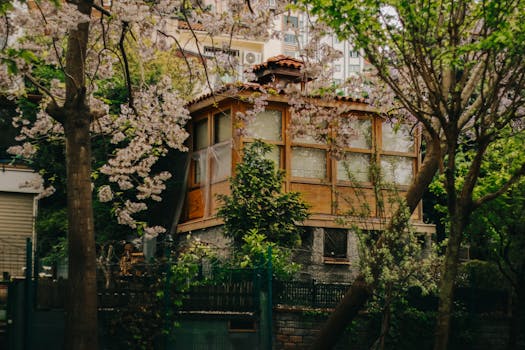
Urban Green Spaces: The Future of Outdoor Living in European Cities by 2025
Urban Green Spaces: The Future of Outdoor Living in European Cities by 2025 is a topic of increasing importance as cities continue to grow and urbanize. As we move forward, it’s essential to consider the role that green spaces will play in shaping the future of outdoor living in European cities.
Introduction to Urban Green Spaces
Urban green spaces refer to areas of nature and vegetation within cities, such as parks, gardens, and green roofs. These spaces provide numerous benefits to both the environment and human health, including reducing air pollution, mitigating the urban heat island effect, and promoting physical activity and mental well-being.
Benefits of Urban Green Spaces
The benefits of urban green spaces are numerous and well-documented. Some of the most significant advantages include:
- Improved air quality: Urban green spaces can help to remove pollutants from the air, improving the overall quality of the air we breathe.
- Reduced urban heat island effect: Green spaces can help to cool cities by providing shade and promoting evapotranspiration, which can reduce the temperature in urban areas.
- Promoted physical activity: Urban green spaces provide opportunities for physical activity, such as walking, cycling, and sports, which can help to reduce the risk of chronic diseases.
- Enhanced mental health: Spending time in nature has been shown to have a positive impact on mental health, reducing stress and anxiety and improving mood.
Challenges Facing Urban Green Spaces
Despite the numerous benefits of urban green spaces, there are several challenges facing their development and maintenance. Some of the most significant challenges include:
- Limited funding: Creating and maintaining urban green spaces can be expensive, and funding is often limited.
- Competition for space: Cities are often densely populated, and there may be competition for space between different land uses, such as housing, transportation, and commerce.
- Climate change: Climate change is altering the weather patterns and ecosystems of cities, which can make it challenging to maintain urban green spaces.
The Future of Urban Green Spaces in European Cities
As we look to the future, it’s clear that urban green spaces will play an essential role in shaping the future of outdoor living in European cities. Some of the trends and innovations that are likely to shape the future of urban green spaces include:
- Green infrastructure: Green infrastructure, such as green roofs and walls, will become increasingly important in urban areas, providing benefits such as reduced stormwater runoff and improved air quality.
- Sustainable design: Urban green spaces will be designed with sustainability in mind, incorporating features such as rain gardens and bioswales to manage stormwater runoff and reduce the urban heat island effect.
- Community engagement: Urban green spaces will be designed to engage with local communities, providing opportunities for recreation, education, and community building.
Conclusion
In conclusion, urban green spaces are essential for the future of outdoor living in European cities. As cities continue to grow and urbanize, it’s crucial that we prioritize the creation and maintenance of these spaces, providing numerous benefits to both the environment and human health. By incorporating green infrastructure, sustainable design, and community engagement, we can create urban green spaces that are not only beautiful but also functional and sustainable.






